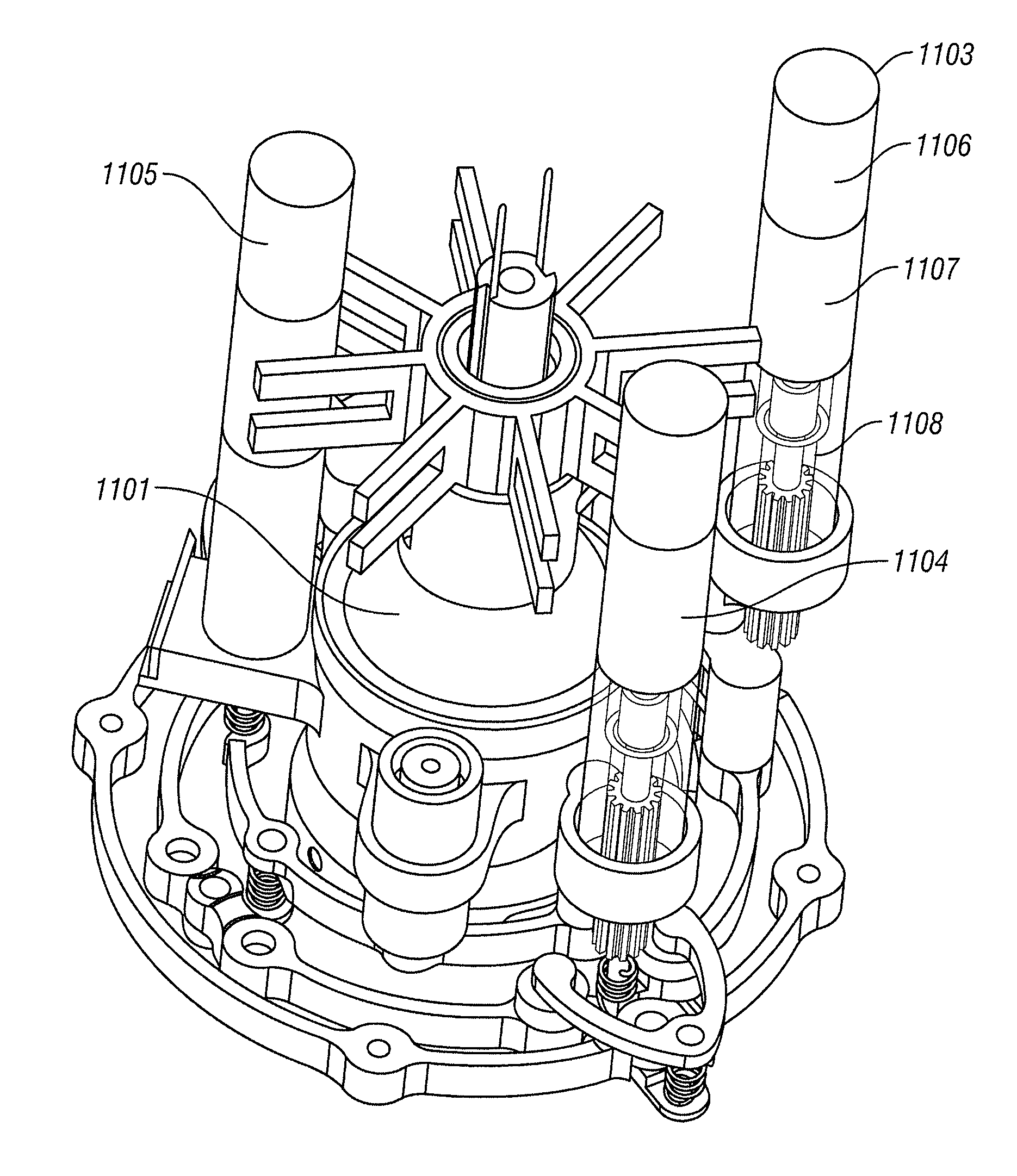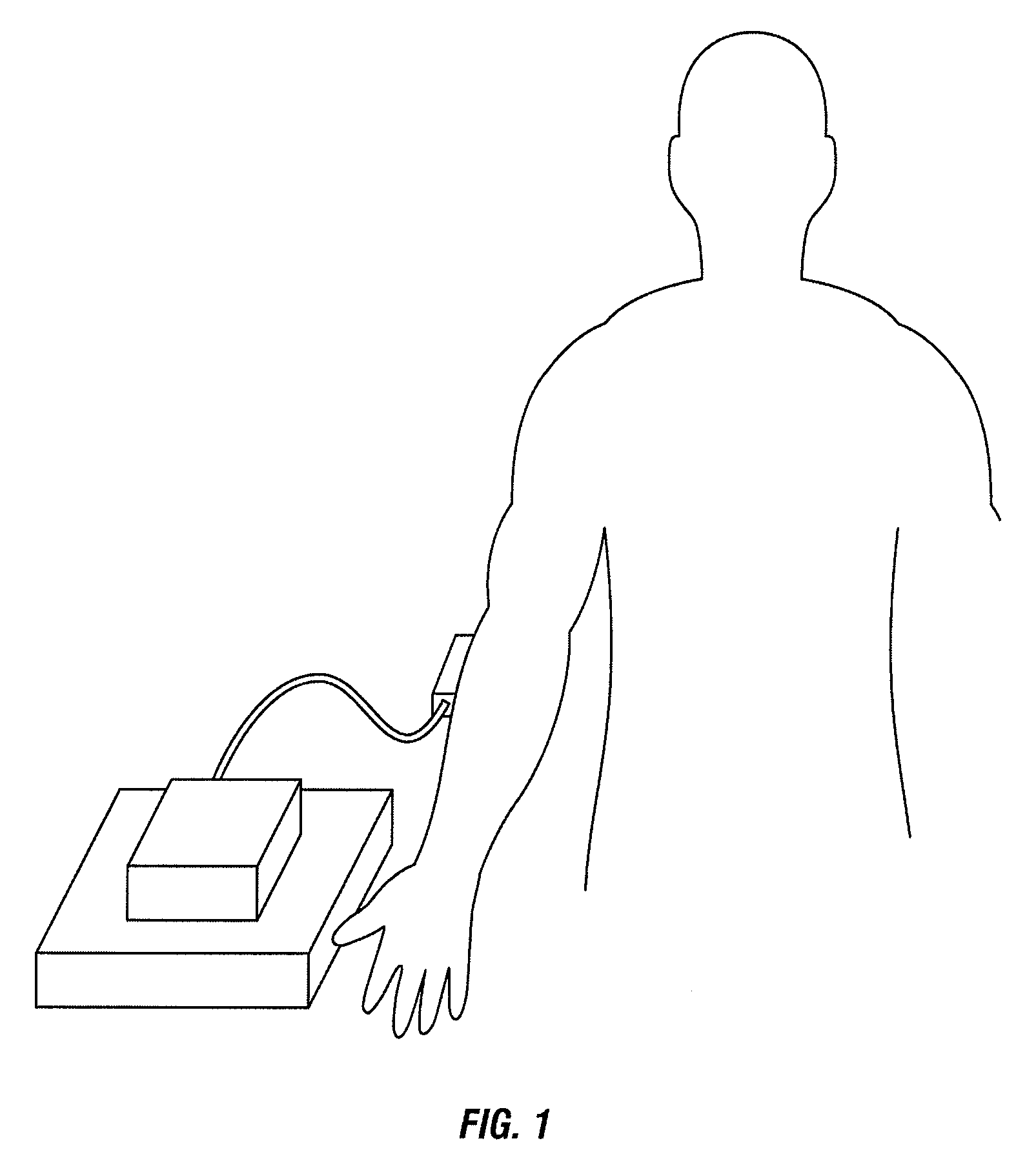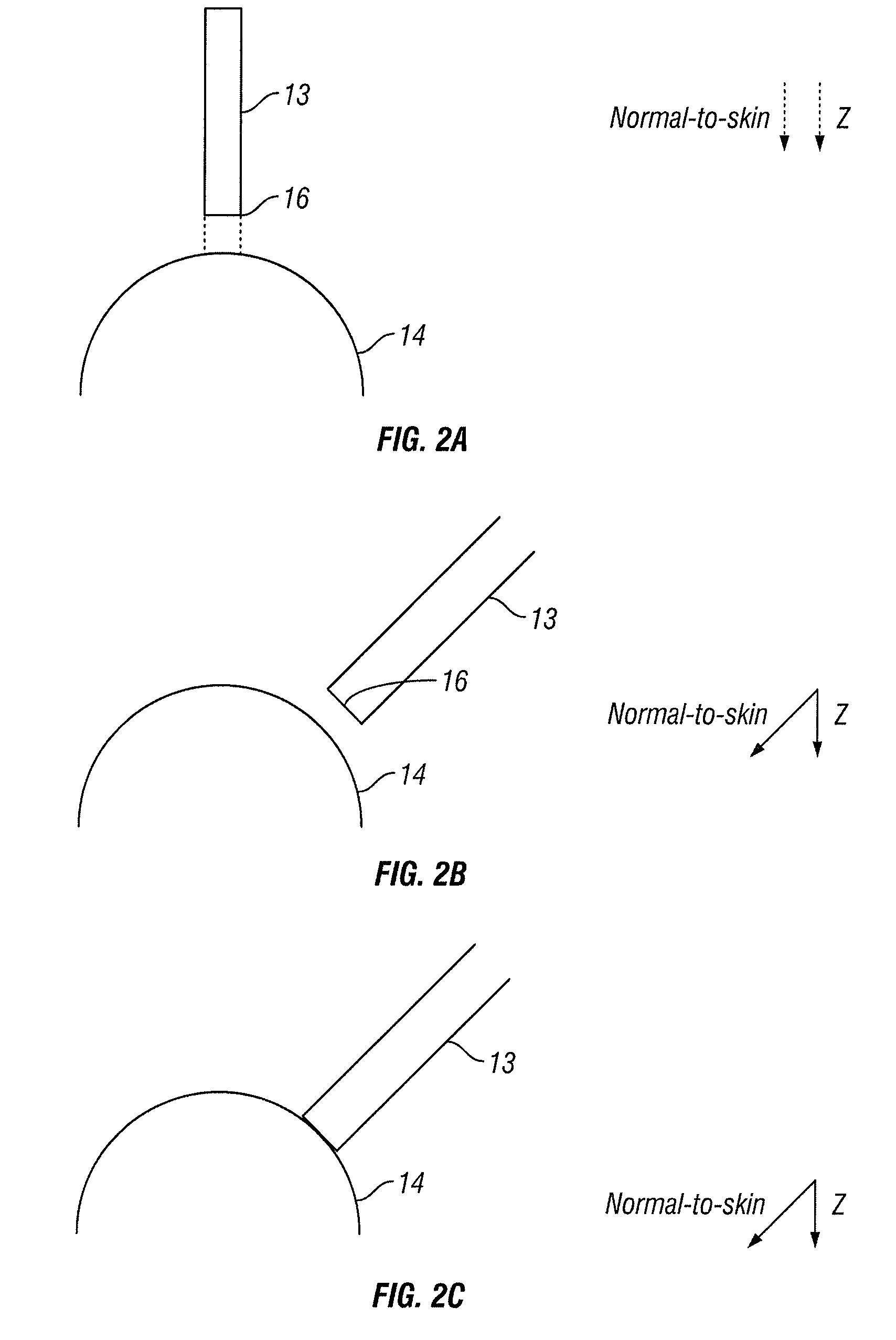Method and apparatus for controlling positioning of a noninvasive analyzer sample probe
a sample probe and non-invasive technology, applied in the field of tissue analyte properties measurement, can solve the problems of difficult removal of spectrum distortion, complicated sample of deformable skin tissue with spectrometer, and concern for specular reflectance and stray ligh
- Summary
- Abstract
- Description
- Claims
- Application Information
AI Technical Summary
Problems solved by technology
Method used
Image
Examples
Embodiment Construction
[0066]The invention comprises a noninvasive analyzer sampling module. Preferably the sample module controls position and / or attitude of a sample probe tip relative to a sample site. Optionally, the sample probe is controlled by an algorithm to minimally contact a sample site, tangentially contact a sample site and / or to controllably displace a tissue sample relative to the nominal plane of the sample tissue surface.
[0067]A key source of error in a noninvasive analyte property determination, such as a glucose concentration determination, is related to probe design and patient interface, as opposed to the spectrograph unit or algorithm design. A key parameter to control is the applied force or pressure applied by the sample probe to the interrogated tissue sample site. A force and / or displacement controlled sample interface aids generation of reproducible sample spectra used in conjunction with a noninvasive analyzer and algorithm to create acceptable reproducibility.
[0068]Preferably,...
PUM
 Login to View More
Login to View More Abstract
Description
Claims
Application Information
 Login to View More
Login to View More - R&D
- Intellectual Property
- Life Sciences
- Materials
- Tech Scout
- Unparalleled Data Quality
- Higher Quality Content
- 60% Fewer Hallucinations
Browse by: Latest US Patents, China's latest patents, Technical Efficacy Thesaurus, Application Domain, Technology Topic, Popular Technical Reports.
© 2025 PatSnap. All rights reserved.Legal|Privacy policy|Modern Slavery Act Transparency Statement|Sitemap|About US| Contact US: help@patsnap.com



